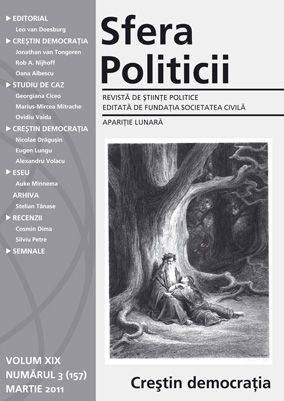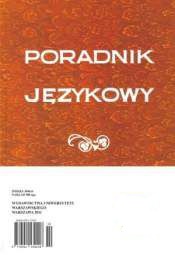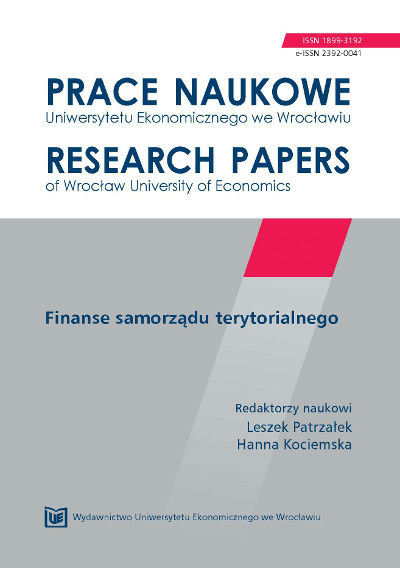





Keywords: elliptical clauses; C.K. Norwid
This paper is dedicated to an analysis of syntactic structures with uninfl ected participles in C.K. Norwid’s correspondence. The research has shown that the poet used participial elliptical clauses (imiesłowowy równoważnik zdania) consciously, in compliance with the standard applicable in the second half of the 19th c. The analysis was carried out based on the criterion of time relation preservation. Statements comprising present participles express an action performed at the same time as the action expressed in the main clause, while perfect participles in Norwid’s correspondence usually express an action preceding the action expressed in the main clause or, occasionally, the following one. Rare cases of using p.e.c. where the principle of time relation preservation was breached were recorded. A signifi cant criterion for the discussed structures is their semantic function arising from the possibility to transform p.e.c. into an adverbial clause. This criterion of division has proved that structures fulfi lling the function of time and causal clauses are most frequent. The high frequency of participles brings Norwid’s correspondence close to the literary genre.
More...
Keywords: 16th-century Poles
The aim of this paper is an attempt to demonstrate who the 16th-century Poles living in a multi-ethnic and multi-religious country called inny (different) and an attempt to prove that the meaning of this lexeme expands under the infl uence of political and territorial transformations. In the 16th century, inny is not only ‘not this one, not such’, the meaning of this lexeme gets closer to the meaning of the lexeme obcy (strange), understood as ‘being from outside a given community (nation, culture)’, or of the lexeme apostata (an apostate) defi ned as ‘a dropout, a dissenter from the faith’. The rich lexicographic material of Słownik polszczyzny XVI wieku (Dictionary of the 16th-century Polish language) documenting the use of the adjective inny shows that, despite the ethnic and cultural as well as religious diversity of the large country, these notations refer mainly to religious issues. It can be inferred from the analysed material that religious diversity was more visible in the everyday life of a 16th-century Pole than ethnic diversity.
More...
Keywords: history of the Polish language; epistolography
This paper overviews a specially selected presentation of Polish epistolography collected in a selection of texts prepared as part of the research project (no. 0089/FNiTP/H11/08/2011) „Teksty do historii używania języka narodowego z aneksami” („Texts for the history of using the national language with annexes”), pursued under supervision of Prof. dr hab. Marek Cybulski, in the context of the role of this type of sources in teaching the history of the Polish language at universities. The authors of this paper assume that in the face of continuous and deepening deprecation of that subject and manifestation of disinterest in or even reluctance for studying the diffi cult issues of the history of language, an anthology of source texts prepared in a manner attractive in terms of erudition and materials could encourage students to explore the subject matter of the history of language. A special place in such a selection is given to correspondence. Hence, a corpus of circa a hundred of private and offi cial letters from the period from the 15th to 21st century, which certify both model genre realisation and variant approaches, were prepared as part of the project. Based on the collected letters, the evolution of the old graphy, realisation of phonetic phenomena, and formation of the grammatical system can be demonstrated during classes in the history of language. It might be extremely interesting for students to demonstrate the impact of external considerations on pragmalinguistic phenomena regarding communication competence, genology and linguistic etiquette.
More...
Keywords: Hieronim Kajsiewicz; God in Sonety; linguistic valuation
This paper is dedicated to the issue of linguistic valorisation of God in Sonety i inne wiersze (Sonnets and other poems) by Hieronim Kajsiewicz. The works published in Paris in 1833 come from the period when the author’s religious views were formed. In this paper, I am using Jadwiga Puzynina’s valuation concept dependent on the changing viewpoint of the lyrical I. The analysis has shown that the works coming from the period preceding the author’s conversion create God as weak and lonely in His heaven. God – Creator loses His attributes of the only, omnipotent and immortal God in the poetry from before the author’s conversion. A believer valorises God as the greatest good, the centre of the universe, light. Positive valuation of the Creator is related to His goodness and mercy. For a faithful Pole living in the Romantic era, the highest value of God is being the Saviour of the Polish nation. The linguistic devices serving the purpose of valuating God from both viewpoints is strongly expressive lexis and metaphors aimed at persuasive impact on the addressee, willingness to persuade him or her into the sender’s views.
More...
Keywords: Jacek Przybylski; translation practice
This paper aims at indicating sources of translation diffi culties and describing Jacek Przybylski’s translation techniques. The analysis was performed with the instruments of the n-fold cultural and linguistic fi ltering theory, an analytical method developed by the author as part of linguistic research on translatability of language games. The material base comprised 84 textual attempts from Jacek Przybylski’s translation. The results of the analysis clearly demonstrate that most translation interferences occur as early as at the stage of. The most common cause of the interferences is the inability to convey the form and meaning of a given game. In the situation of relative untranslatability, the translator’s priority is to reconstruct the language game refl ecting the source semantics. In the majority of cases, Przybylski manages to fi nd a way to introduce a language game to his translation. The source of omission is normally allusions to sex, which are an extremely strongly tabooed element. Phonic linguistic phenomena, such as homophony or tautograms, also cause many diffi culties to the translator. The result of the analysis is a description of the techniques used by Jacek Przybylski, who stands out by his high linguistic competence and awareness of the possibility to modify the translation linguistically. The translation techniques applied by Przybylski are operations used also in the contemporary translation studies.
More...
Keywords: Polish lexicography; 17th century
This paper discusses the history of compiling French and Polish in seven, more and less extensive and still insuffi ciently explored, multi-language lexicons published over the 16th and 17th centuries. All these works contain the compiled Polish and French vocabulary, placed among words originating from other modern languages, as well as from classical languages. This means that the source language in the majority of the analysed dictionaries is neither Polish nor French, but Latin (with the exception of the dictionary by Mesgnien-Meniński, the guide by Miselli and Gazophylacium by Ch. Warmer). The analysed publications include large dictionaries (Calepinus, Megiser, Mesgnien), but also, for instance, phrasebooks published in a pocket-sized format (Hexaglosson). This paper proves that not all works considered dictionaries to date may be called so b ecause they represent a completely different type of publications. What follows is that certain statements regarding qualifi cations of specifi c works containing a linguistic material, which are established in academic research,should be subject to revision and verifi cation.
More...
Keywords: Poland 14th and 15th century; judicial oath
This paper is based on the material of the judicial oath formulas of the 14th and 15th centuries from the area of central Lesser Poland (Krakowskie region) and northern Lesser Poland (Sandomierskie, Chęcińskie, Radomskie regions). The thesis material was excerpted for the purpose of analysing selected linguistic (mainly phonetic) characteristics of judicial oath formulas from Lesser Poland and fi nding an answer to the question about the pronunciation characteristic of that province in the 14th and 15th centuries as well as about internal diversifi cation of the Lesser Polish dialect. On this basis, it was possible to identify dialectal differences at three levels: characteristics differentiating Lesser Poland from other provinces, differences between central and northern Lesser Poland, and fi nally dialectal pronunciation diversities among people living in northern Lesser Poland – lands only: Sandomierska, Chęcińska and Radomska.
More...


Keywords: excise tax; subject of taxation; tax base; fiscal efficiency
Excise tax is a single-phase indirect consumer tax of a selective type imposed on specific products. Among various groups of products that excise tax applies to, there are energy products, alcoholic beverages, tobacco products and electricity. The article is devoted to the issues of fiscal efficiency of excise tax. The purpose of the article is to analyze and assess fiscal efficiency excise tax in Poland, as well as to identify the relationship between the subject of taxation and the tax base and fiscal efficiency excise tax. The research covers the period from 2004 to 2013. The study enables to arrive at the conclusion that tax revenues of each group of the products have different importance for the structure of revenues from excise tax. The study reveals that out of the items subject to excise, energy products are the most fiscally efficient in Poland.
More...
Keywords: income inequalities; Gini coefficient; fiscal policy; redistribution; economic growth
The article focuses on a redistributive function of fiscal policy in view of limitation of excessive income inequalities among the society. Owing to that, there is a description of the essence, meaning and goals of the redistributive function in the process of implementation of social-economic policy. What is more, there is a focus on the problem of income disproportions, their changes in Poland in 2004–2012 and the impact of the inequality on the stability and endurance of the economic growth. In conclusion, it was stated that redistribution of GDP, adequate to needs and condition of the economy, is able to reduce excessive income disproportions (mainly with the use of the taxation system) which negatively influence perspectives for the economic growth. The fiscal policy in this matter will be effective if, owing to its implementation, the stimuli to economic activity will not be weakened, what might be the case if excessive taxes in favour of income egalitarianism would be introduced.
More...
Keywords: local government finances; financial management of municipalities; municipal budget; revenues and expenditures of municipalities
Finances of municipalities determine the realization of public services and shaping of the conditions for local development. The study of the dynamics of changes of budget revenues and expenditures of Polish municipalities shows numerous internal and external conditions of financial management at the local level. The demonstrated tendencies point to the strengthening of the position of local governments, with the passage of time, however, various kinds of problems with financing of current and development tasks appear in many units. In the publication an attempt is made to demonstrate and evaluate trends occurring in financial management of municipalities in this century and to identify current problems occurring in finances of municipalities.
More...
Keywords: independent fiscal institution; fiscal council; fiscal discipline; public finance
In the article, the authors attempt to determine the desired model of fiscal council in Poland owing to which it will be possible to maintain fiscal discipline in the medium and long term. To achieve the objective, the following methods were used: descriptive and comparative analysis of existing institutional models of an independent fiscal institution (the review of the global experience). This article is divided into three main parts: a) models of an independent fiscal institution, b) fiscal discipline in Poland, c) desired model of fiscal council in Poland. The model which introduction might be considered in Poland should operate on the basis of the broadest possible powers, such as the advisory role, the prognostic role, setting an annual budget balance level and the expected level of public debt.
More...
Keywords: tax expenditures; personal income tax; children’s allowance in personal income tax; family benefits
The use of children’s allowance in personal income tax is discussed. The allowance is a kind of tax preference, classified as tax expenditure. Due to low demographic factors, the ratio legis of such a solution was the support of families with children. The controversies on the use of the allowance, especially its discriminating character, and differences between potential and real effects of its use, especially in the context of family benefits, are described.
More...
Keywords: state aid; European Union; internal market; competition policy; Treaty premises
The final requirement under Article 107 (1) TFEU is that the measure should be liable to distort competition and affect trade between Member States. These conditions are closely related and are often considered together. But the two conditions remain distinct and should not be conflated. A measure may distort competition, but relate to a wholly local situation. Equally, a measure may affect a market in which there is intra-Community trade, but the distortion or likely distortion of competition may not properly be demonstrated. The subject of the article is an analysis of the requirement of a distortion of competition and the requirement of an adverse effect on trade between Member States. Even if these both requirements are inextricably linked with one another, they must be separately reviewed, in order to do justice to different goals they pursue.
More...
Keywords: National Central Bank of Poland; European Central Bank; monetary policy; interest rate
The aim of this article is to analyze the relationship between the monetary policy of the National Central Bank of Poland and the decisions of European Central Bank in the field of shaping the main interest rate. In modeling that link the autoregressive model with distributed lags was used. This model allows to conduct the multiplier’s analysis describing the short-term and the long-term impact of an exogenous variable on a given endogenous variable. In the study the Polish reference rate was used as the dependent variable and the interest rate on the main refinancing operations of the ECB was used as explanatory variable. Quarterly time series for the period of quarter II 2000–quarter IV 2014 were used in the analysis. The estimated model revealed an impact of the ECB’s interest rate policy on the decisions of the Poland’s NCB in that field in the short- and medium-term.
More...